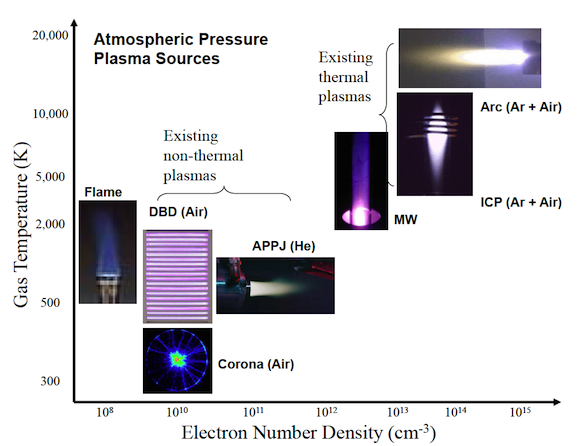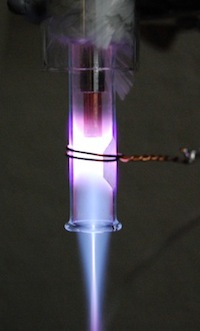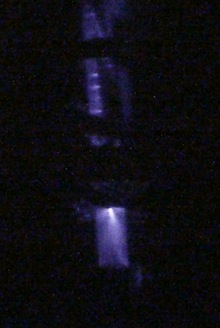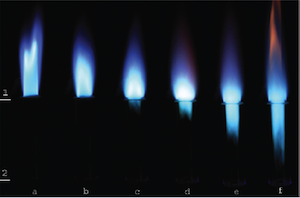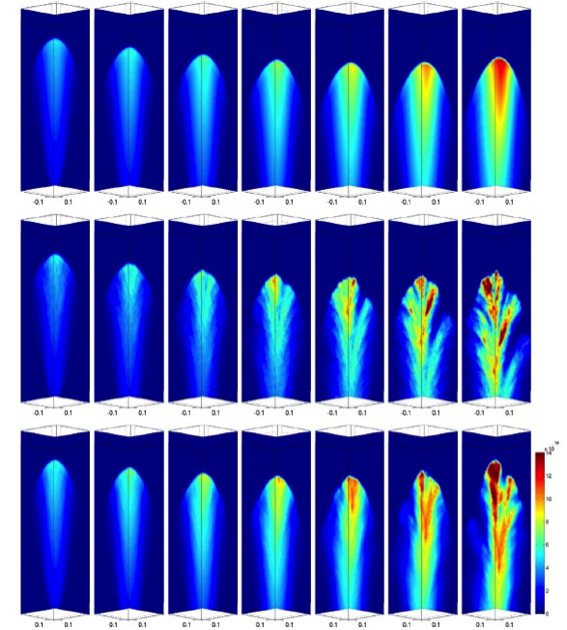- Introduction to Low-Temperature Plasmas, Discharges in Water
Prof. John E. Foster, University of Michigan More info ↓
Hide info ↑
Abstract
This Lecture will give a general overview of the physics of plasma discharges in liquid water with particular application to water purification. The remarkable physical properties of liquid water will be discussed. The scope of the problem—the need for advanced water treatment is surveyed including a review of advanced, non-plasma methods for context. A general overview of methods for facilitating the interaction of plasma with water is discussed with some focus on discharges in bubbles. Our current understanding of breakdown mechanisms and general discharge physics in water will be reviewed. Plasma-induced chemical reactions in liquid water are surveyed within the context of water purification. Key technical challenges and unresolved physics as related to large-scale implementation of plasma-based purification methods are summarized. The prospects for future research endeavors in this area and actual practical implementation is also discussed.
Biographical Summary
Prof. John E. Foster
University of Michigan
John Foster is an Associate Professor at the University of Michigan in the Department of Nuclear Engineering and Radiological Sciences and director of the Plasma Science and Technology Laboratory. His research areas include fundamental studies of plasma production in bubbles in liquid water, atmospheric pressure plasmas discharges, and the study plasma physics related problems associated with plasma thrusters for space travel applications.
- Microplasmas
Prof. J. Gary Eden, University of Illinois More info ↓
Hide info ↑
Abstract
This presentation will serve as an introduction to the emerging field of microcavity plasmas. However, it will also provide recent examples of advances in microplasma science and selected applications ranging from plasma chemical processing to medical applications to lighting.
Biographical Summary
Prof. J. Gary Eden
University of Illinois
Gary Eden is a professor in the Department of Electrical and Computer Engineering at the University of Illinois. He has been engaged in research in atomic, molecular and ultrafast laser spectroscopy, the discovery and development of visible and ultraviolet lasers, and the science and technology of microcavity plasma devices. He has served as Assistant Dean in the College of Engineering, Associate Dean of the Graduate College, and Associate Vice-Chancellor for Research. Currently, he is the Gilmore Family Professor in the Department of Electrical and Computer Engineering and Director of the Laboratory for Optical Physics and Engineering, as well as Research Professor in the Coordinated Science Laboratory, and the Micro and Nanotechnology Laboratory. Dr. Eden has authored 250 publications and 35 awarded patents, is a member of four honorary organizations, and is a Fellow of the IEEE, the Optical Society of America, the American Physical Society, the American Association for the Advancement of Science (AAAS), and the SPIE. He has served as Editor-in-Chief of the IEEE Journal of Quantum Electronics and is currently Editor-in-Chief of Progress in Quantum Electronics. He has received numerous awards for his research and service.
- Weakly Ionized Plasmas Applications in Hypersonics
Prof. Michael Shneider, Princeton University More info ↓
Hide info ↑
Abstract
This talk presents a short selective review of theoretical and experimental studies conducted by the author and collaborators in areas related to supersonic and hypersonic flow regimes with applications such as drug reduction, inlet and effective vehicle geometry control in off-design flight regimes, and steering and sonic boom mitigation. A common feature of all these substantially different applications and processes is a power deposition into a supersonic flow which results in the creating of virtual shapes, modifying flow like solid obstacles immersed in it. The virtual shapes can be created by microwave plasma heating, magnetohydrodynamic forces, laser or electron beams, combined with subcritical microwave, and localized plasma-assisted surface combustion.
Biographical Summary
Prof. Michael Shneider
Princeton University
Dr. Mikhail N. Shneider received a master’s degree in theoretical physics (with honors) from the Kazan State University, Russia, a Ph.D. in Plasma physics and Chemistry from All-Union Electrotechnical Institute, Moscow and Doctor of Sciences (highest scientific degree in Russia) in Plasma physics and Chemistry from Institute for High Temperatures, Russian Academy of Sciences, Moscow. Since 1998 until the present, Dr. Shneider has been working at the Mechanical and Aerospace Engineering Department, Princeton University. At present he is a Senior Scientist in the Applied Physics Group. His research interests are in the theoretical study of gas discharge physics; physical gasdynamics; atmospheric electrical phenomena; non-linear optics and laser-matter interaction. Dr. Shneider has more than 140 papers in refereed journals (7 review papers) and one book.
Applied Physics Group, Dept. of Mechanical & Aerospace Engineering, Princeton University, Princeton, NJ 08544-5263. Tel: (609)258-1022; E-mail: shneyder@princeton.edu
- Optical Diagnostics of High Pressure Plasma in Gases and Liquids
Prof. Peter Bruggeman, University of Minnesota More info ↓
Hide info ↑
Abstract
Optical diagnostics are one of the principal tools to characterize plasmas to date. In this lecture, we will give an overview of optical spectroscopy techniques to measure the key plasma parameters and constituents including gas temperatures, electron densities (and temperatures), electric fields and (short lived) species. This will include passive optical emission spectroscopy, absorption spectroscopy, laser induced fluorescence and laser scattering.
Many of the optical techniques are developed and applied in low pressure plasmas and the highly collisional environment in high pressure gases and liquids significantly complicates their interpretation. The non-equilibrium properties of the plasma also needs to be considered in the analysis of spectroscopic data and increases the complexity of optical diagnostics compared to equilibrium systems. A significant part of the presentation will deal with the specific challenges with the interpretation of optical diagnostics in highly collisional non-equilibrium plasmas.
Biographical Summary
Prof. Peter Bruggeman
University of Minnesota
Dr. Bruggeman is the Richard and Barbara Associate Professor of Mechanical Engineering at the University of Minnesota. He is specialized in plasma diagnostics and plasma chemistry of non-equilibrium (multiphase) atmospheric pressure plasmas. Primary research interests are plasma-liquid interaction and non-equilibrium plasma chemistry applied to plasma processes for environmental, biomedical and renewable energy technologies. He performed extensive work on laser induced fluorescence, optical emission spectroscopy, laser scattering, absorption spectroscopy and mass spectrometry to measure plasma properties and reactive species densities. Recent work in his group is concerned with the characterization of novel medical plasma devices for wound healing, optimizing and investigating plasma technologies for disinfection, environmental remediation and conversion processes for energy applications. Professor Bruggeman is the recipient of the 2012 Hershkowitz Early Career Award and the 2013 IUPAP Young Scientist Medal and Prize in Plasma Physics. Professor Bruggeman is a member of the editorial board of Plasma Sources Science and Technology, Journal of Physics D: Applied Physics and Plasma Chemistry and Plasma Processes.
- Cavity Ring Down for Atmospheric Pressure Plasmas
Prof. Chuji Wang, Mississippi State University More info ↓
Hide info ↑
Abstract
Cavity ring down spectroscopy (CRDS) is a highly-sensitive laser absorption spectral technique. Its attractive features for plasma diagnostics include absolute measurement (self-calibration) of species concentration with high spatial (mm) and temporal (1 s) resolutions. Using a broad-band laser source, CRDS can quantify many different plasma species based on their spectral fingerprints. A high-resolution scan of a selected transition line can estimate plasma gas temperature and electron density using linewidth broadening mechanisms. When CRDS is employed with other optical diagnostic techniques such as imaging, OES, etc. multiple parameters of a plasma source can be diagnosed simultaneously. The implementation of CRDS for plasma diagnostics requires some experience in lasers, spectroscopy, and hands-on skills; however, once it is setup, a plasma-CRDS system is very robust and easy to use. The objective of this lecture is to give a tutorial yet in-depth discussion on CRDS for atmospheric plasma diagnostics. The lecture consists of four major parts: 1) Fundamentals of CRDS, 2) Plasma-CRDS, 3) CRDS combined with other techniques for atmospheric plasma diagnostics, and 4) Examples of CRDS measurements of plasma/combustion radicals (OH).
Biographical Summary
Prof. Chuji Wang
Mississippi State University
Chuji Wang is a Professor of Physics at Mississippi State University. His research interests include laser spectroscopy (LIF, REMPI, Raman, OES, CRDS) and plasma physics. His recent research efforts focus on cavity ring down diagnostics of atmospheric plasmas (inductively coupled plasma, microwave plasma torch, and plasma jet), plasma assisted combustion, CRDS-plasma instrumentation, and CRDS sensing. He has four US patents in CRDS and has published more than 65 peer-reviewed journal articles and three book chapters. He and his research group have developed four portable CRDS instruments (a multi-species ring down spectrometer for water, methane, and carbon-13 isotope; a multi-function fiber loop ring down sensor; a plasma-ring down spectrometer; and a ring down breath analyzer). He received his PhD degree in Chemical Physics at University of Science and Technology of China in 1998. He plays tennis and runs in his spare time.
- Stratification of Glow Discharges
Prof. Vladimir Kolobov, CFD More info ↓
Hide info ↑
Abstract
Due to their highly non-equilibrium nature, glow discharges are prone to various instabilities producing spatial-temporal patterns in low temperature plasmas. In this presentation, we will review fundamental physical mechanisms responsible for stratification and constriction of glow discharges in atomic and molecular gases at low and high pressures. Kinetic, thermal and non-linear mechanisms of ionization waves and filamentation of current-carrying plasmas will be discussed based on experimental observations, theoretical models, and computer simulations.
Biographical Summary
Prof. Vladimir Kolobov
CFD
Dr. Vladimir Kolobov is a Technical Fellow at CFD Research Corporation. He obtained his PhD degree in 1989 from St. Petersburg University in Russia and did post-doctoral studies in Universite P. Sabatier (Toulouse, France), the University of Wisconsin in Madison, and the University of Houston. After joining CFDRC in 1997, he was responsible for the development of commercial software for plasma simulations and the next-generation adaptive multi-scale computational tools for a variety of applications from aerospace to nano-science. He was a PI of several multi-year SBIR/STTR projects funded by NSF, AFRL, NASA, AFOSR, DARPA and Dept. of Commerce, and numerous industrial R&D projects from GE, Samsung, TEL, Panasonic, MKS Instruments, ABB, Inficon, and other companies. Dr Kolobov is an expert in theoretical and computational plasma physics, physical kinetics, fluid mechanics and rarefied gas dynamics, the author of over 60 journal articles and numerous conference presentations.
- High-pressure Filamentary Discharges (Streamers)
Dr. Natalia Babaeva, University of Michigan More info ↓
Hide info ↑
Abstract
Electrical breakdown in gases at atmospheric pressure occurs as a sequence of several processes that lead to the formation of plasma filaments - streamers. This talk will begin with a brief description of the streamer morphology, physical mechanisms of positive and negative streamer advancement in uniform and non-uniform fields, dependence of streamer parameters on the applied voltage and initial conditions. Physical processes that are responsible for streamers interaction in corona and dielectric barrier discharges (DBDs) will then be covered, and insights into the nature of streamer branching in gases, dense media and liquids will be presented. Special attention will be given to the state-of-the-art in streamer modeling, new methods and algorithms and issues of accuracy in streamer codes. Discussions on industrial applications of these discharges will follow with special emphasis on processes such as plasma remediation of toxic gases, ozone production, functionalization of surfaces for biomedical applications, and the destruction of the bacteria.
Biographical Summary
Dr. Natalia Babaeva
University of Michigan
Dr. Natalia Yu. Babaeva received the M.S. degree (with honors) in physics and engineering from the Moscow Institute for Physics and Technology (MIPT) and the Ph.D. degree in Physics and Mathematics (with specialization in plasma physics and plasma chemistry) from Institute for High Temperatures, Russian Academy of Sciences, Moscow. She was a Research Professor with the Pohang University of Science of Technology, Pohang, Korea, from 2001 to 2005. In January 2005, she joined Iowa State University, Ames, and in September 2008 she joined University of Michigan, Ann Arbor, as Assistant Research Scientist. Dr. Babaeva’s research area is low temperature plasmas, their fundamental properties, their interaction with surfaces and their technological applications. She is involved in developing of multi-scale computer models which address different physical phenomena including lighting sources, materials processing, streamer evolution in air and liquids, biological, medical and environmental applications. Dr. Babaeva has authored two book chapters and more than 40 peer-reviewed scientific papers and authored or coauthored more than 100 conference proceedings and invited talks on topics related to streamer plasma and electric discharges.
Electrical Engineering and Computer Science Department, University of Michigan, Ann Arbor, MI 48109-2122 USA. Phone: (734) 647 8224; E-mail: nbabaeva@umich.edu
- Laser Collisional Induced Fluorescence
Dr. Ed Barnat, Sandia Lab More info ↓
Hide info ↑
Abstract
Laser collision-induced fluorescence (LCIF) is a powerful diagnostic technique, which is used for making temporally and spatially resolved measurements of electron densities in a plasma discharge. In this workshop, an overview of the fundamental principles and practices utilized in the implementation of the diagnostic technique will be offered. Topics of discussion will include the use of simplified collisional-radiative models used to predict the evolution of an atomic system to pulsed laser excitation as well as methods to benchmark and validate such predictions. As much of the research and development is ongoing, the current state-of-the art will be demonstrated through the use of examples highlighting how the LCIF technique has been employed. Finally, future efforts along with key challenges will be outlined.
Biographical Summary
Dr. Ed Barnat
Sandia Lab
Dr. Barnat came to Sandia as a post-doctoral associate in 2002 under a DOE-BES program and was hired on as a member of the technical staff in 2005. While at Sandia, Dr. Barnat’s research has focused on developing and implementing the state-of-the art laser and optical based diagnostic techniques used for studying fundamental phenomena arising in plasma or electrical discharges. Dr. Barnat’s research experience with various forms of plasma generation and interrogation extends from vacuum discharges to mega-amp arcs formed in water.
- Plasma Stimulated Combustion
Prof. Andrei Starikovskiy, Princeton University More info ↓
Hide info ↑
Abstract
The fascinating field of plasma aided combustion will be reviewed. Implementation, important plasma chemical reactions and our current state of understanding will be discussed in detail. An overview of prospects for the future and implementation of plasma-stimulated combustion in real systems will also be reviewed.
Biographical Summary
Prof. Andrei Starikovskiy
Princeton University
Andrey Starikovskiy is a research specialist at Applied Physics Group of Princeton University. Dr. Starikovskiy is a leading interdisciplinary plasma physicist whose research spans picosecond pulsed discharges and nonequilibrium plasma generation, nonequilibrium plasma aerodynamics, plasma assisted combustion and detonation, and molecular energy transfer processes, including excitation and relaxation of vibrational and electronic levels, chemical reactions among excited species, plasma radiation.
